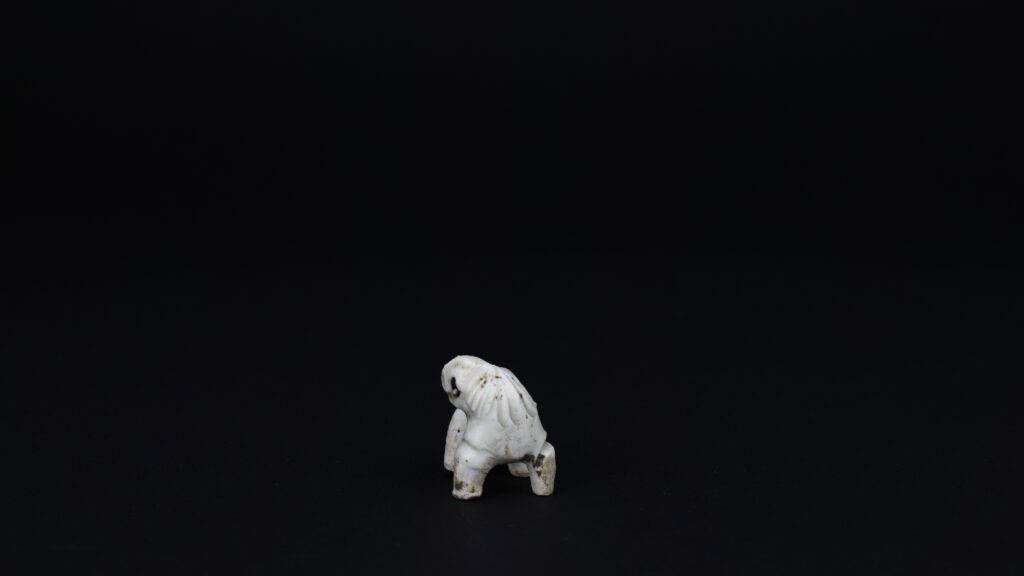
A Miniature Song Qingbai Model of an Animal
A Miniature Song Qingbai Model of an Animal, 11th or 12th Century. This hand-modelled Qingbai porcelain animal stands on all fours, the legs are unglazed. The animal has its head turned with its incised mane flowing down. The deep set circular eyes are impressed into the wet clay and then painted with a pale iron oxide. A similar animal that is constructed in just the same way from the Arthur M. Sackler Collection is illustrated in the exhibition catalogue ; Early Chinese Miniatures (Dr.Paul Singer, China House Gallery/China Institute in America, New York, 1977) on page 87, plate 215, where it is described Tz’u Chou Yao, Cizhou ware.
SOLD
- Condition
- In excellent condition, no damage.
- Size
- Height 3 cm (1 1/4 inches).
- Provenance
- From a Private Collection of Early Chinese Miniature. Collection label to the base.
- Stock number
- 26120
- References
- A similar animal from the Arthur M. Sackler Collection is illustrated in the exhibition catalogue ; Early Chinese Miniatures (Dr.Paul Singer, China House Gallery/China Institute in America, New York, 1977) on page 87, plate 215, where it is described Tz'u Chou Yao, Cizhou ware.
Information
Qingbai Porcelain
The earliest known qingbai wares were produced in Jingdezhen in Jiangxi province around the late 10th century and are characterised by faint pale-blue glazes on low, wide forms. Qingbai continued to be enormously popular and highly produced throughout the Song dynasty (960-1279) and was prevalent in the Yuan dynasty (1279-1368), but slackened during the Ming dynasty (1368-1644) until being replaced by tianbai, ‘sweet white’ ware. The initial forms of qingbai were simple bowls and dishes, but by the mid-Northern Song the forms had advanced to include a wide variety of objects used for daily life such as ewers, boxes, incense burners, granary models, vases, jars, sculptures, cups, cup-stands, water droppers, lamps, grave wares, and tools for writing and painting. The precedent for the majority of these forms is found in earlier metalwork and lacquer and Rawson has suggested that the imitation of silver was the primary force behind the production of white wares, including qingbai.








